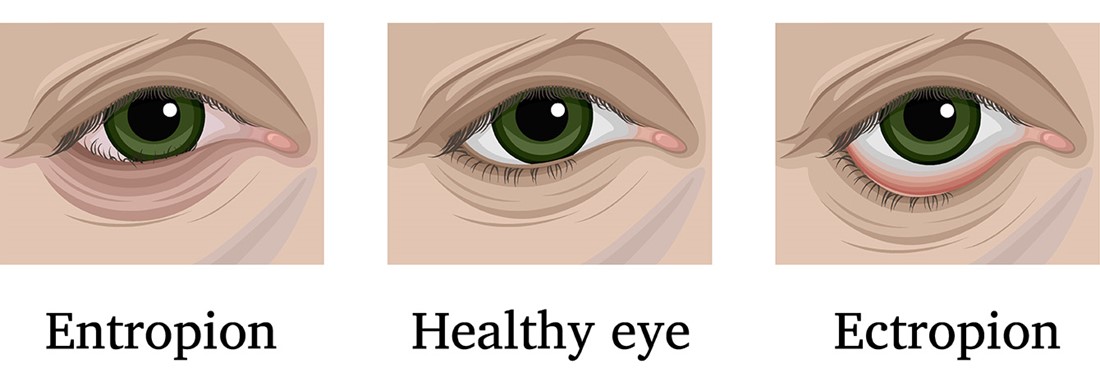Entropion
Entropion is an eyelid condition which causes the eyelid to turn inwards resulting in the eyelashes rubbing against the surface of the eye. This can be uncomfortable, and it can lead to damage to the ocular surface. This is more common in the lower lid and it may happen all the time or after blinking or squeezing the eye shut. There are a few factors that can lead to entropion including weakening of the eye muscles and stretching of the eyelid tissues resulting in laxity of the tissues. Additionally, scarring of the conjunctive from causes such as trachoma or previous eye surgery or trauma as well as inflammation causing a spasm of the orbicularis muscle (the muscle that closes the eye) can also cause a subsequent rolling inward of the eyelid. The entropion can also be congenital and present from birth and there may be an extra fold of skin in the eyelid causing inward turning of the eyelashes but in most cases, this settles as the child grows older and the face elongates. Assessment of the patient requires an understanding of all the different anatomical and pathological causes of entropion.
There can be a wide range of symptoms causing irritation, redness, watering, discharge, crusty, blurry vision, and light sensitivity. Untreated it can cause damage to the ocular surface and this can pose a potential threat to eyesight. Entropion is therefore an important condition to treat appropriately and promptly.
Temporarily taping can be applied to the lower lid to pull the lid out, keep the skin around the eyes cleaned and a strip of medical tape is applied under the edge of the eyelid down towards the cheek and this holds the eyelid in its normal position. This helps pull the eyelashes away from the surface of the eye. The only affective long-term treatment is surgery which can usually be performed under local anaesthetic as a day case procedure. Surgery involved tightening and repositioning the lower eyelid tissues with the use of absorbable stitches. A pad is placed over the eye which is removed the following day and a course of antibiotics for one to two weeks would be used afterwards. Surgery is generally successful, without long term risks and scarring is usually minimal. There is a low risk of occurrence of the condition afterwards, in which case another surgical procedure may be required but this is uncommon.


